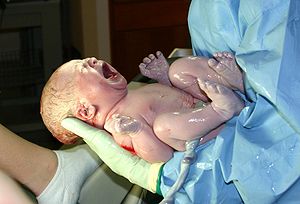
Many women don’t have a choice when their birth becomes medicalized and a c-section is imminent. You want your baby safely delivered, as well as you don’t want to endanger your own life. C-sections do save lives, but there is no question that the actual rates of c-sections are much higher than are medically necessary, according to the World Health Organization (WHO).
According to WHO, the following risks are associated with c-sections:
Limited awareness of harms that are more likely with cesarean section
Cesarean section is a major surgical procedure that increases the likelihood of many types of harm for mothers and babies in comparison with vaginal birth. Short-term harms for mothers include increased risk of infection, surgical injury, blood clots, emergency hysterectomy, intense and longer-lasting pain, going back into the hospital and poor overall functioning. Babies born by cesarean section are more likely to have surgical cuts, breathing problems, difficulty getting breastfeeding going, and asthma in childhood and beyond. Perhaps due to the common surgical side effect of “adhesion” formation, cesarean mothers are more likely to have ongoing pelvic pain, to experience bowel blockage, to be injured during future surgery, and to have future infertility. Of special concern after cesarean are various serious conditions for mothers and babies that are more likely in future pregnancies, including ectopic pregnancy, placenta previa, placenta accreta, placental abruption, and uterine rupture (Childbirth Connection 2006).
According to new Finnish research, you can add to the above description of c-section risks obesity for the child. Probiotic bacteria in the birth canal actually protects children from obesity or being overweight throughout childhood.
The Brisbane Times explains:
Professor Isolauri, of the University of Turku in Finland, found that children with lower levels of ”good” gut bacteria were more likely to be obese. “The good bacteria that babies pick up during the natural birth process play an important role in reducing an infant’s risk of becoming overweight or obese in their early years of life,” she said.
”With obesity set to be one of the greatest health challenges of the next decade, we need to be giving our children the best start possible to maintain a healthy weight.”
Researchers go on to say that if a c-section is necessary, breastfeeding is the next best way to give children this beneficial bacteria. Combine vaginal birth with breastfeeding, and our children have the best start towards healthy weight.
[…] Fulfillment Of the Requirement for the Degree Bachelor of Science in Biology MANILYN F. DIANO 2012Probiotics in the Birth Canal: Obesity Risk Higher for Babies Born Via C-Section .recentcomments a{display:inline !important;padding:0 !important;margin:0 […]